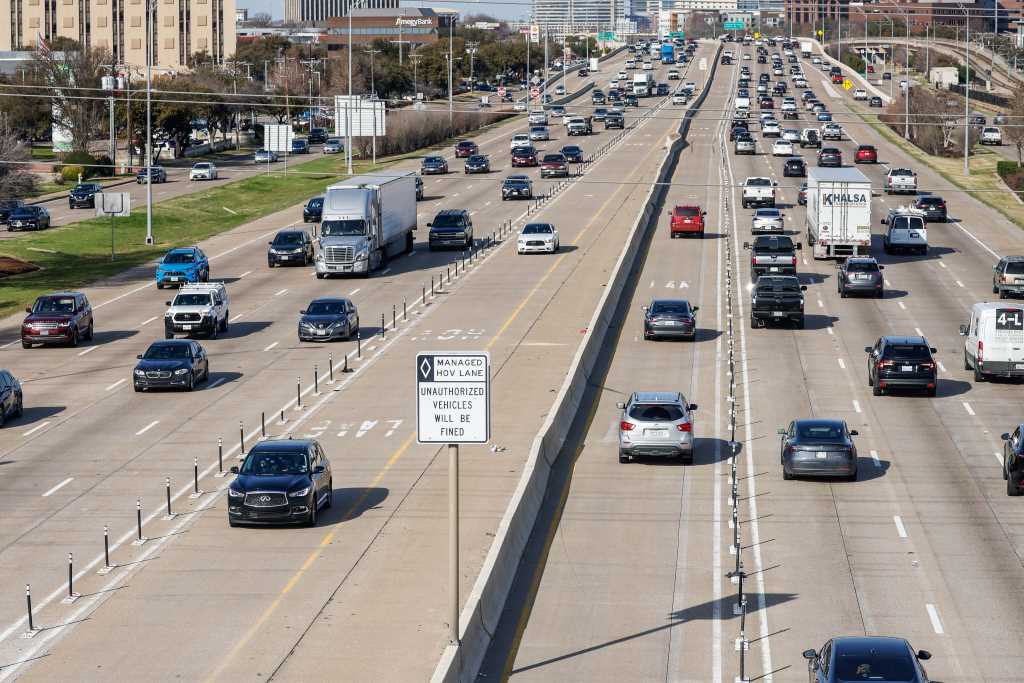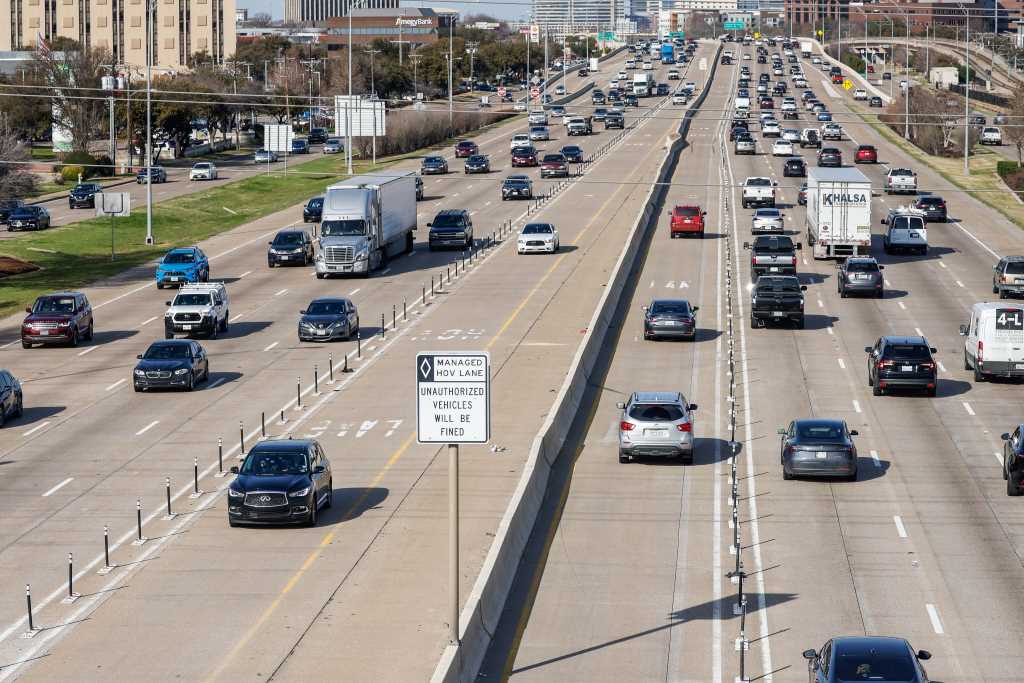Driving on an expressway is a distinct experience compared to navigating ordinary streets. While both roads serve the purpose of transportation, the design, traffic flow, and rules governing them differ significantly.
Understanding why is driving on an expressway different from driving on an ordinary street is crucial for ensuring a safe and efficient journey on both types of roads.
Why Is Driving On An Expressway Different From Driving On An Ordinary Street?
To understand why is driving on an expressway different from an ordinary street, first, you should know about expressways vs. ordinary streets
An expressway is a type of highway designed for high-speed traffic with limited access points. They are typically characterized by multiple lanes, grade separations (overpasses and underpasses), and minimal intersections.

In contrast, ordinary streets are typically located within urban or suburban areas and are designed for both vehicular and pedestrian traffic.
They often have a lower speed limit, more intersections, and may include bike lanes or sidewalks. Ordinary streets are essential for local commerce, residential access, and community connectivity.
So with that said, here are some of our summarized notices on why is driving on an expressway different from driving on an ordinary street for your reference, presenting in table.
| Feature | Expressway | Ordinary Street |
| Traffic flow | High volume, continuous flow, fewer intersections | Lower volume, frequent stops and starts |
| Lane structure | Multiple lanes for different speeds and directions, HOV lanes | Fewer lanes, often two-way traffic |
| Speed limits | Higher speed limits | Lower speed limits |
| Merging and exiting | Requires careful merging and exiting techniques | Simpler merging and exiting |
| Weather conditions | Requires extra caution in adverse weather | Requires extra caution in adverse weather |
| Construction zones | Frequent construction zones | Less frequent construction zones |
| Traffic density | Can experience heavy traffic congestion during peak hours | Generally less congested, but can experience traffic during peak times |
| Noise pollution | Noisier due to higher volume and speed of traffic | Quieter due to lower traffic volume and speed |
| Environmental impact | Contributes to air pollution and noise pollution | Less significant environmental impact |
| Parking availability | Limited parking or require paid parking | Easier parking availability |
| Accessibility | Less accessible to pedestrians and cyclists | More accessible to pedestrians and cyclists |
| Community feel | Less connected to the community | Provides a closer connection to the community |
By understanding these major differences, you can adapt your driving habits and behaviors to ensure a safe and enjoyable drive on both ordinary streets and crowded expressways.
Safety Considerations on Expressways and Ordinary Streets
Now you know why is driving on an expressway different from driving on an ordinary street. And it’s easy to note that both expressways and ordinary streets present unique safety challenges.
While expressways generally have higher traffic volumes and speeds, ordinary streets can also be hazardous due to these concerns.
- Distracted driving is a major safety concern on both types of roads. Using electronic devices, such as cell phones or navigation systems, while driving can significantly increase the risk of accidents. Remember to always stay focused on the road and avoid distractions.
- Tailgating and following distance are crucial safety factors on both expressways and ordinary streets. Maintaining a safe following distance allows for sufficient time to react to sudden stops or other hazards. Tailgating, or following too closely, can lead to rear-end collisions.
- Lane changes require careful attention on both types of roads. Before changing lanes, it’s important to signal, check blind spots, and ensure it’s safe to do so. Sudden lane changes can increase the risk of accidents.
- Road rage is a serious safety concern on both expressways and ordinary streets.
In the end, to ensure a safe driving experience on both expressways and ordinary streets, it’s essential to stay focused, maintain a safe following distance, signal before lane changes, avoid distracted driving, and remain calm in challenging situations!

FAQs
-
How do the rules for merging differ on expressways compared to ordinary streets?
Merging on expressways requires a greater focus on speed and timing due to the faster-moving traffic.
Unlike on ordinary streets, where vehicles may stop or slow down to allow merging, expressway drivers are expected to adjust their speed to seamlessly join the flow of traffic.
-
Why are there more stringent laws about stopping on an expressway?
Stopping on an expressway is far more dangerous than on an ordinary street due to the high speeds and the potential for severe accidents.
This is why many jurisdictions have strict laws against stopping on expressways, except in emergencies.
-
How does expressway driving affect fuel efficiency differently than driving on ordinary streets?
Expressway driving is generally more fuel-efficient due to the consistent speeds and lack of frequent stops. However, driving at excessively high speeds can decrease fuel efficiency compared to more moderate expressway speeds.
-
What role does aerodynamics play in expressway driving versus ordinary street driving?
At higher speeds on expressways, a vehicle’s aerodynamics significantly impact its stability and fuel efficiency. On ordinary streets, where speeds are lower, aerodynamics play a much less crucial role in the vehicle’s performance.
-
Why do some drivers feel more fatigued after driving on an expressway compared to driving on ordinary streets?
Expressway driving can lead to driver fatigue more quickly because of the constant high speeds and the need for sustained focus over long distances, with fewer natural breaks like those provided by traffic lights and stop signs on ordinary streets.
-
How do emergency procedures differ on an expressway compared to an ordinary street?
On an expressway, in the event of an emergency, the procedures are more stringent due to the high speed of traffic.
Drivers are advised to pull over as far as possible from the traffic lanes, turn on hazard lights, and, if possible, exit the vehicle on the side away from traffic.
-
Why is lane discipline more critical on expressways than on ordinary streets?
Lane discipline is crucial on expressways because vehicles are moving at higher speeds, and sudden lane changes or driving in the wrong lane (such as cruising in the left lane) can lead to dangerous situations and accidents.
-
How do expressway driving dynamics change in adverse weather conditions compared to ordinary street driving?
In adverse weather conditions, expressway driving becomes more challenging due to the higher speeds and the greater impact of factors like wind, rain, or fog.
On ordinary streets, slower speeds and frequent stops can make it easier to navigate in such conditions, but expressway driving requires more advanced preparation and caution.
-
Why are expressway exits more challenging than regular street turns?
Exiting an expressway requires precise timing and control because of the higher speeds involved. Drivers must decelerate smoothly while transitioning from the fast-moving flow of traffic to a slower pace on the exit ramp.
This is more complex than a regular street turn, where speeds are generally lower, and there’s more time to prepare for the maneuver.
Check out this video from Smart Drive Test to learn 5 tips to be a safer, smarter driver when driving on the highway!
Eventually, it’s not that hard to grab the notion of why is driving on an expressway different from driving on an ordinary street.
Expressways and ordinary streets offer distinct driving experiences due to their differing design, traffic patterns, and safety features.



